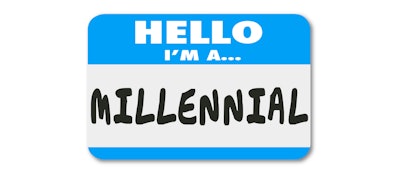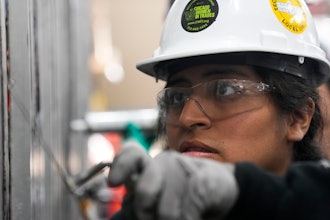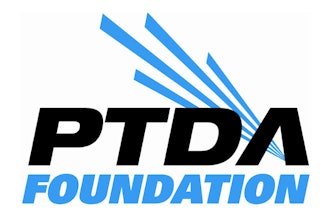
Imagine your alarm clock has gone off every morning at 6 a.m. for the past 30 years, where you’ve woken to the sun coming up as the birds start to chirp, and the smell of fresh coffee awakens your senses. Now imagine one morning your alarm randomly goes off at 4:30 a.m., and you wake, disoriented amidst pitch blackness with none of the common morning sights, sounds and scents to which you’ve grown accustomed.
This scenario — in comparison — is not nearly as jarring as the wake-up call that the industrial distribution sector is having right at this moment. While change may be the only constant in this world; it’s the sheer velocity of change that is causing so much disruption.
The First Industrial Revolution used water and steam power to mechanize production. The Second used electric power to give birth to mass production. The Third used electronics and information technology to automate production. Today we stand on the brink of what researchers say is the Fourth — the Technological Revolution. Promising to fundamentally disrupt everything, dramatically altering the way we live, work, and interrelate to one another — the velocity, scope, and systems impact of the Technological Revolution has no historical precedent.
Already we’ve seen the emergence of new disruptive business models all around us. Uber, the world’s largest taxi service owns no vehicles; Alibaba Group, the world’s largest retailer owns no inventory; and Airbnb, the world’s largest provider of accommodations owns no property.
For industrial distributors who have been doing things pretty much the same way for the past 25 to 30 years, this is terrifying. Even more challenging is the fact that many in the distribution industry are in the stage of life where they are heading toward retirement, as opposed to reinventing their business. Case in point, Industrial Distribution’s 2015 Salary Survey cited 44 percent of the sectors’ execs polled were 60+ years of age, and only 22 percent were 49 years or below. Executives had the title of Owner, Chairman, CEO, CFO, CIO, COO, President, or VP.
The Next Generation Workforce
Whether you agree or disagree on the cultural or behavioral characteristics of Millennials, at the end of the day it is a force to be reckoned. According to the Pew Research Center, today more than 1 in 3 workers are Millennials; they now comprise the largest faction of the workforce, and by 2020 over 50 percent of the workforce will be Millennials.
Considering they are the future workforce and the future of the industry, distributors must move now to devise strategies to attract and retain Millennials. The industry faces many challenges in this regard, especially since Millennials are sometimes unfamiliar with the industrial distribution industry.
This is somewhat ironic as Millennials need to feel that they are a part of something bigger. Meanwhile, distributors need Millennials’ digital native-ness to help usher in new ways of working via mobile and e-commerce to adapt and survive — this is life or death folks — it doesn’t get any bigger than that!
Meeting Millennial Customer Needs
Generationally speaking, Millennials have higher expectations in the area of technology; therefore, distributors must empower them with the digital tools they are accustomed to using. As distributors reimagine workforce enablement leveraging technologies that capitalize on Millennials’ work styles, this can improve overall productivity and collaboration across all generations and make your organization more customer-centric.
Keep in mind, as the Millennial ranks grow within your workforce, they too are rising in your customers’ organizations and becoming more influential in purchasing decisions. By understanding and empowering your Millennial workforce, you’ll be better prepared to align with your Millennial customers’ needs. A recent survey of Millennials with a bachelor’s, master’s or postgraduate degree showed 28 percent are already in management positions.
Millennials aka “digital natives” are the first generation to grow up fully online. Because of this, the ability to buy anything online is simply taken for granted. In general, they prefer self-service sales channels, a fact which is revolutionizing distribution as we know it. According to Forrester’s 2015 Global Business Technographics Infrastructure Survey, Millennials more than older generations are more apt to purchase technology products from online application marketplaces and eCommerce websites. In addition, younger Millennials (ages 18 to 24) had the lowest responses for purchasing from an in-person salesperson or inside salesperson.
Your Millennial workforce is a great resource to help design mobile engagements to satisfy Millennials’ ultra-mobile work styles. They also appreciate newer tools such as wearables; play to their strengths by making them your early adopter pilot group, fueling workplace and customer engagement transformation.
Minding the Gap
Never have we had the magnitude of workplace multi-generational diversity that we are experiencing today. Baby Boomers, Gen Xers and Millennials are all working side by side, and all with very different expectations on how they generate, discover and share information.
I would argue that while it’s important for employees to appreciate HOW others think and process information, it’s more important that they have a collective understanding of the WHY behind the work.
While Millennials may be the change agents of the future, Baby Boomers are often the denizens of deep domain expertise, with Gen Xers falling somewhere between these two spheres. Common goals and key imperatives can transcend generational and digital divides to harness the collective time and talents of individuals, unifying them as an effective workforce.
Consider assembling multi-generational teams — “Tiger Teams” — to work together to solve a challenge or formulate recommendations for change that benefit from vision and forward thinking and which are grounded in wisdom and experience.
Define the common goal, and let the group define the tactics. In this way, you can cross cultural chasms and even identify “blockers” — those that are resistant to change. This can help inform and the development of strategies to assist individuals in adapting to the new workforce realities. This also can help nurture young Millennial talent. According to a PwC study, more than half of Millennials claimed “opportunities for career development” made an organization an attractive employer. The multi-generational team approach can support Millennials who want to surround themselves with peers they can connect with and learn from.
 Craig McCollum, Executive Vice President of Americas for Epicor Software
Craig McCollum, Executive Vice President of Americas for Epicor SoftwareWith great change comes great opportunity. Distributors are at the threshold of a very challenging but exciting time. The task at hand is to reinvent and reimagine your business to deliver more value to your customers — to think and act differently. And fortunately, with Millennials, you’ve got the right folks for the job.
Craig McCollum is Executive Vice President of Americas for Epicor, an organization that provides business software solutions for the manufacturing, distribution and retail sectors. McCollum says he’s long-studied the transition to the Millennial workforce, both at Epicor and in his personal life, where he has two Millennial aged children, one of whom co-owns a sandwich shop franchise with McCollum, employing a predominantly Millennial workforce.























